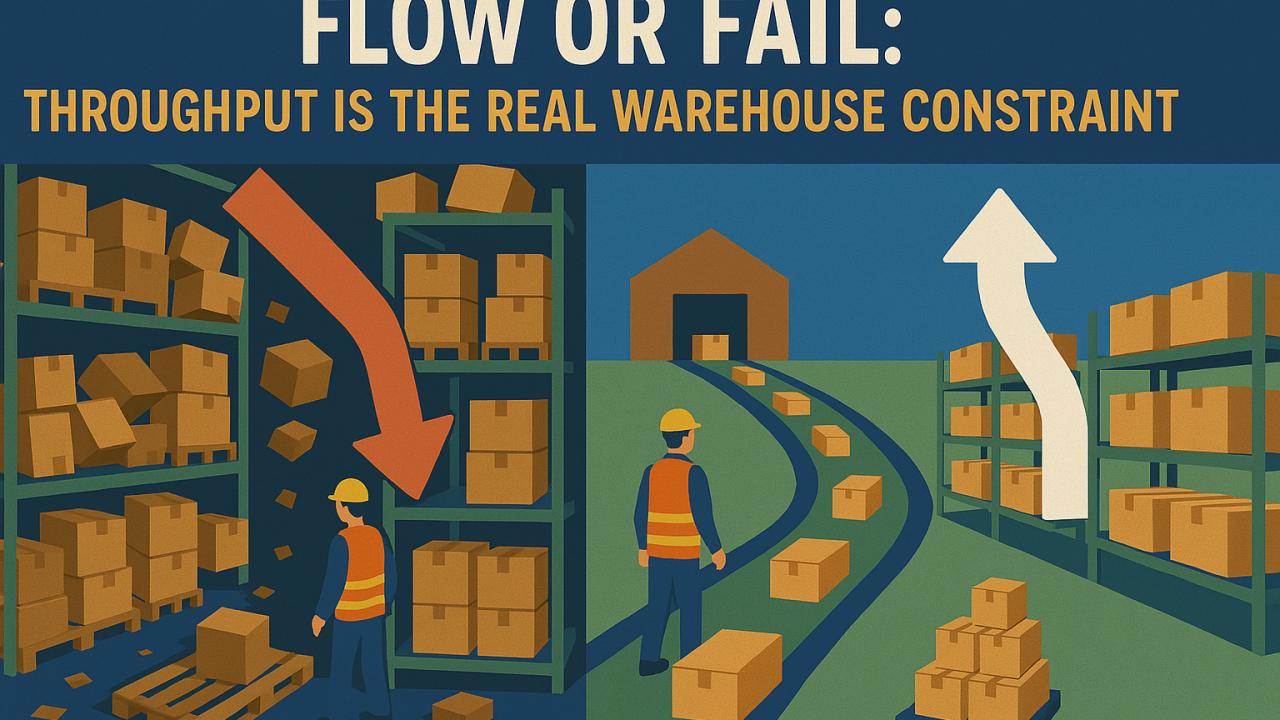Trump 2.0 Week 12 Recap: Discussing The Reciprocal Tariff Pause, The Escalating Trade War With China, and More
In typical Trump fashion, this week was full of surprises.
In this article, we’ll discuss:
- The decision to pause the reciprocal tariffs for 90 days
- The rapidly escalating trade war with China
- The tripling of the de minimis duties
- New pharmaceutical tariffs on the horizon
- Trump's negotiating strategy
We’ll also briefly discuss how manufacturers and distributors should proceed, emphasizing how a Veryable workforce strategy can provide a significant operational competitive advantage at this moment in time.
90 Day Reciprocal Tariff Pause
While the country-specific reciprocal tariffs of 11-50% did go into effect on April 9th at 12:01AM, by lunchtime, President Trump had announced a 90 day pause - with one exception: China.
The main reason for this decision was that more than 75 countries have reached out to negotiate so far. Additionally, director of the U.S. National Economic Council Kevin Hassett mentioned that the collapsing bond market also was a factor in this decision, and that the Trump administration wants to avoid an economic depression at all costs.
With that being said, the lower 10% baseline tariff that was implemented on April 5th is still in effect however, and applies to all countries originally subject to the higher country-specific tariffs.
While this pause is currently expected to end on July 8th, the White House hasn’t yet ruled out the possibility of an extension, and President Trump recently told a reporter in a cabinet meeting that if he can’t reach the deals he wants with U.S. trade partners, the tariffs will revert back to higher rates.
Either way, U.S. manufacturing has a bright future ahead. Based on recent comments from the White House, it’s safe to say that President Trump expects countries to drop their own levies on American products if they hope to avoid these new tariffs. Given that many countries’ tariffs on U.S. imports are twice what the U.S. would potentially charge, significant reductions in these tariffs or their removal altogether would make American products significantly more competitive in foreign markets. This of course would provide a major boost for domestic manufacturers.
Escalating Tensions With China
Last week, in response to the Trump administration’s plan to impose a 34% reciprocal tariff, China shot back by implementing their own 34% reciprocal tariff. Additionally, China added 11 U.S. companies to its unreliable entity list*, and put export controls on 16 companies to prohibit the export of Chinese dual-use items**.
*Unreliable entity list: companies on this list are prohibited from engaging in import and export activities with China, and are prohibited from making new investments within China
**Dual-Use Items: goods, technologies, and services that may be used either to fulfill civil or military purposes or to contribute to an increase in military potential.
In response, China was hit with an additional 50% tariff. In return, China announced they would raise their reciprocal tariff to 84% starting on April 10th. Within just a few hours, the Trump administration raised the tariff to 125%.
Now on Friday morning, China has hit back again, raising their tariff on U.S. imports to 125%.
Combined with the 20% fentanyl related tariff the administration previously imposed a few months prior, the total tariff on China is now 145%.
Considering that the U.S. is China’s second largest export market, this will be a major blow to their economy. As many experts have pointed out, this could cut Chinese exports to the U.S. in half in the next few years. A big win for U.S. manufacturers who can rise to the occasion.
A 10% tariff? You can potentially live with that. But a 145% tariff? There’s simply no way to profitably run a business when the products you are importing are subject to a tariff this high.
While there’s currently no end in sight to this tit-for-tat trade war and no plans on the books for any talks so far between Trump and Xi, this is something to closely monitor in the next few days. Given Trump’s actions so far, he’ll likely increase the tariffs on China even further.
Tripling Of The De Minimis Duties
Last week on April 2nd, President Trump signed an executive order ending de minimis treatment for goods from China and Hong Kong starting on May 2nd at 12:01 a.m. EDT. Specifically, goods that previously qualified under the de minimus exemption will be subject to a duty of either 30% of their value, or $25 per item. This executive order also stated that the rate will increase to $50 per item on June 1st.
While this original executive order would have already been impactful, the White House decided this wasn’t enough given the escalating tensions with China.
On Tuesday, the White House tripled these levies, increasing them to 90% of their value or $75, with plans to increase the rate to $150 per item on June 1st.
On Wednesday, these levies were increased even further. Now starting on May 2nd, goods previously qualifying under the de minimis exemption will be subject to an even higher duty of 120% of their value or $100, with an increase to $200 planned for June 1st.
As our Head of Reindustrialization Matt Horine discusses in Episode 4 of the U.S. Manufacturing Today podcast, closing this loophole does a few things.
- It levels the playing field and forces foreign sellers to pay their fair share.
- It constricts the flood of cheap foreign imports and will allow U.S. manufacturers to compete on quality, innovation, and reliability instead of being forced into a race to the bottom.
On a side note, closing this loophole will also help curb shipments of Fentanyl to the U.S., which is one of the main reasons the Trump administration decided to close this loophole.
New Pharmaceutical Tariff On The Horizon
On Tuesday while speaking at a fundraiser dinner, Trump stated: “We're going to be announcing very shortly a major tariff on pharmaceuticals. And when they hear that, they will leave China." Also last week, he told reporters that "pharma" tariffs would arrive "at a level that you haven't really seen before".
While the timing is still up in the air on this, new announcements on this are likely to come in the next week or so. As far as the scope of these tariffs, Trump has previously said these will start at 25%, but that he wants to increase them over time.
Despite the timing being up in the air, pharmaceutical companies aren’t wasting any time. Pfizer CEO Albert Bourla has already stated that Pfizer is considering shifting production to America. He’s not alone either, and a few weeks back, Eli Lilly announced a $27B plan to build 4 new manufacturing plants in America.
Understanding The Trump Approach
Regardless of how you feel about President Trump, it’s important to understand that his negotiating strategy more often than not follows a similar pattern, which is outlined in his book The Art of The Deal.
- Start with an extreme position to create room for compromise.
- Use attention-grabbing statements to control the narrative and put the other side on the defensive.
- Create a sense of urgency to pressure the other side into making concessions.
- Keep the other side guessing about your true intentions and bottom line.
- Be willing to walk away if the deal doesn’t meet your standards.
Applying this to tariffs and the current trade war - Trump has said from the get go that in addition to boosting domestic production, tariffs will be used as a tool to pressure foreign governments to renegotiate trade agreements.
Starting high with the reciprocal tariffs and making numerous statements about how we’re putting an end to other countries taking advantage of us put these other countries on the defensive and forced them come to the negotiating table. Given that the U.S. is the largest export market for more than 100 countries, the cards are certainly in Trump’s hands. And while the tariffs are here to stay long term, it’s likely that they will be rolled back somewhat in exchange for other countries dropping their steep tariffs, which of course would significantly boost the price competitiveness of American products in these markets.
How Should Manufacturers and Distributors Proceed?
While there’s certainly a possibility that the 90 day reciprocal tariff pause will be extended, don’t count on it. If you’re still importing from these countries like you have been and these tariffs do revert back to their higher rates, you will simply get annihilated. That’s the whole point. The days of cheap imports are over. It’s time to pivot or become obsolete.
If you’re on the other side of the equation and manufacture commonly imported products, especially if they’re from China, now is your time to shine. Don’t wait to take action though - time is of the essence. As our Houston Market GM Jacob Shaffield discusses in a recent article, those who move first win the most.
How Veryable Can Help You Establish an Operational Competitive Advantage
Regardless of which situation your company is in, a Veryable workforce strategy provides numerous competitive advantages in today’s highly volatile and uncertain economy.
Here’s how:
If you’re a domestic manufacturer of commonly imported goods…
Scaling up with new hires can take months, which leaves you playing catch up while more agile competitors seize opportunities. With Veryable on the other hand, businesses can help you scale up drastically in just a few days. But the benefits extend far beyond rapid scalability - the flexible nature of this approach allows you to dial back instantly if demand suddenly drops, whether for a few days or a few weeks. This provides the best of both worlds, infinite capacity when you need it without margin erosion down on slower days. This allows you to be aggressive and put yourself out there without fear of getting caught with your pants down.
Businesses without this capability have to play by a different set of rules, and that’s why you see so many business leaders sitting on their hands waiting for external sources to tell them it’s time to take action. It’s understandable really. Let’s say you just spent weeks scaling up with new hires thinking that the phone is going to start ringing off the hook when tariffs take effect, but then they get pushed back and render your forecasts useless. Do you lay off these workers and let weeks of training go to waste? Or do you eat the costs for the time being? Either way that’s a lot of resources right out the window. For smaller businesses especially, this could be the kiss of death.
If your business is heavily reliant on imports from tariffed countries and will be hit hard by these tariffs…
Obviously, finding domestic suppliers should be priority number one. But if you can’t find ones capable of meeting your needs fast enough and have to continue importing tariffed products for any period of time, you’ll need to quickly take steps to eliminate any wasteful spending. Otherwise, passing off costs to consumers and losing your position in the market is inevitable.
That’s where an on-demand labor pool can help. Labor is by far one of the largest operating expenditures for manufacturing and distribution companies, and any waste trimmed here can have drastic bottom line impacts. Businesses leveraging our solution are commonly able to eliminate expensive overtime, as well as overstaffing on slower days. One of our manufacturing partners, Scentsational Soaps & Candles, was able to reduce labor costs by 15% over a several month period.
If your business is trying to reshore operations by either increasing capacity at an existing facility or launching a new one…
In addition to helping you scale up faster than traditional methods, on-demand labor can help you maximize your existing setup and quickly increase capacity by either adding additional shifts, or providing support to highly skilled full-time employees. As our Ohio region VP of Operations Austin Walker discusses in a recent article, “we can increase output 594% just by more effectively utilizing the facilities and equipment that are already in place”.
While Veryable operators unfortunately can’t be used to help you build your new facility, they can certainly help you get it up and running ahead of time once construction is completed. Check out this case study for a real world example.
Conclusion
If you find these weekly recap articles helpful, you should check out our new U.S. Manufacturing Today Podcast. Hosted by our Head of Reindustrialization Matt Horine, this podcast dives deeper into the changes taking place under Trump 2.0, and also features insights and perspectives from current operations professionals like you.
You can find this podcast on: Apple Podcasts, Spotify, YouTube, or PocketCasts. Or you can listen on our website at: https://www.veryableops.com/us-mfg-today-podcast
To learn more about the changes taking place, visit our Navigating Trump 2.0 page. On this page you’ll find a full breakdown of Trump’s tariffs, as well as various blog articles that discuss how Veryable can help you thrive in this uncertain and rapidly changing landscape.
Previous Posts
Flow or Fail: Throughput Is the Real Warehouse Constraint
The Future of Manufacturing and Logistics
Create a free business profile today to explore our platform.






